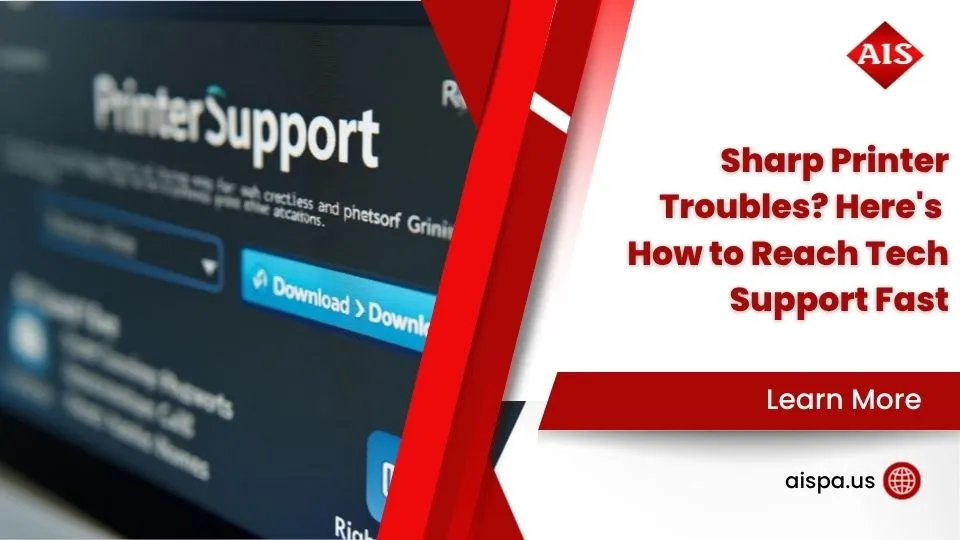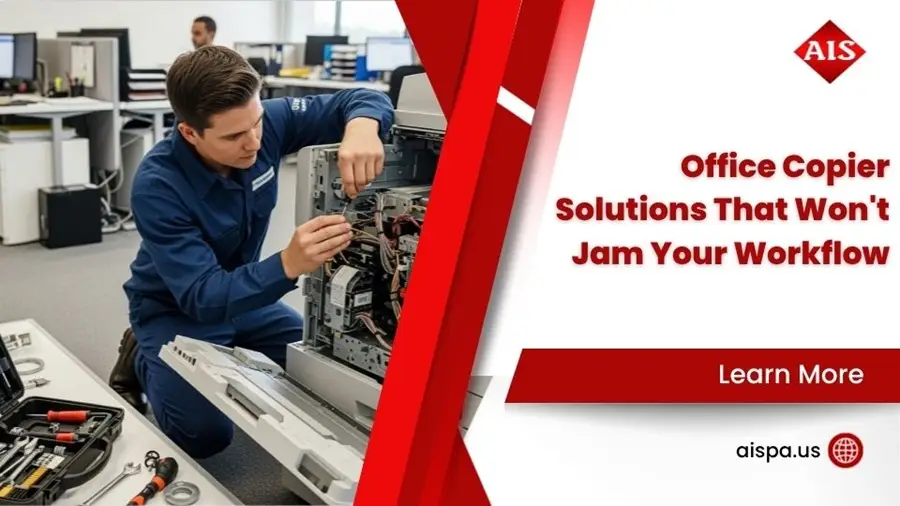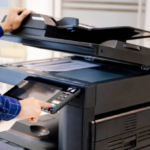Portable and Powerful: Top MFP Printers Reviewed
MFP printer — a term often encountered in modern offices — refers to a multifunction printer, a device that combines several machines into one compact unit. These devices are becoming essential because they integrate printing, scanning, faxing, and copying capabilities, making them an all-in-one solution for efficient document management.
- MFP Overview: MFPs offer a multifunctional approach to handling documents, suitable for both home offices and professional environments.
- Key Features: They can print, scan, copy, and fax, saving space and reducing costs by replacing multiple devices.
- Benefits: MFPs streamline workflows, improve productivity, and integrate seamlessly with wireless networks and cloud services.
In choosing the right MFP, look for features that align with your needs, such as print speed, connectivity options, and versatile printing capabilities. Understanding these aspects can help manage your office documents efficiently and cost-effectively, providing a reliable backbone for your business operations.

Understanding MFP Printers
An MFP printer is a versatile device that combines multiple functions into a single machine. These multifunction printers are designed to handle various tasks like printing, scanning, copying, and sometimes faxing. By integrating these capabilities, MFPs offer a convenient solution for both home and office environments.
What is an MFP Printer?
An MFP or multifunction printer is essentially a hub of productivity. It merges the roles of several standalone devices, reducing the clutter and complexity in any workspace. This integration not only saves space but also simplifies document handling processes.
Multifunction Printers vs. All-in-One Devices
While the terms multifunction printer and all-in-one device are often used interchangeably, there can be subtle differences. An all-in-one device typically refers to consumer-grade products designed for home use, focusing on basic tasks like printing and scanning. In contrast, multifunction printers may offer more robust features suitable for business settings, such as advanced networking capabilities and higher duty cycles.
Why Choose an MFP?
- Space-Saving: By combining several devices into one, MFPs free up valuable office space.
- Cost Efficiency: With fewer devices to maintain, there are savings on energy consumption and supplies.
- Productivity: MFPs streamline workflows, allowing for quick transitions between tasks like scanning a document and then printing it.

When selecting an MFP, consider features that meet your needs, such as print quality, connectivity options, and additional functions like duplex printing. Understanding these elements can help you choose the right device to improve your document management system efficiently.
Top MFP Printers of 2024
When it comes to choosing the best MFP printer for your needs, it’s important to consider the top contenders in the market. Here’s a look at some standout models that offer a blend of performance, features, and value.
HP OfficeJet Pro 9125e
The HP OfficeJet Pro 9125e is a top pick for those seeking an inkjet multifunction printer that’s both easy to set up and affordable to run. This model is renowned for its high-yield cartridges, which keep printing costs low at just 3.2¢ per black page and 12.8¢ for color. If you opt for HP’s Instant Ink program, costs can drop even further.
This printer excels with beautiful prints and fast, crisp scans. Its sleek design fits seamlessly into any office space, making it a great choice for both home and professional environments.
Brother MFC-J4335DW
For those on a budget, the Brother MFC-J4335DW offers excellent value with its low cost per page. This inkjet MFP is perfect for users without heavy productivity demands, offering a cost of just 1¢ per page in black and 5.2¢ for color.
While the setup can be a bit clunky due to its outdated interface, the printer delivers sharp text and realistic glossy images. It may not be the fastest when it comes to scanning, but for everyday tasks, it’s a reliable choice that won’t break the bank.
HP Color LaserJet Pro MFP 3301fdw
If you’re looking for a laser option, the HP Color LaserJet Pro MFP 3301fdw stands out with its user-friendly touch interface and speedy performance. This model prints at a remarkable speed of up to 26 pages per minute and handles a variety of media types thanks to a convenient bypass slot.
The 3301fdw is also equipped with features that support mobile printing, making it ideal for modern work environments. While the initial cost is higher, its low running costs make it a smart investment for small businesses needing reliable, high-quality color prints.

These multifunction printers offer a range of features to suit different needs. Whether you prioritize cost efficiency, print quality, or speed, there’s an MFP printer in 2024 that will meet your requirements.
Key Features to Consider
When choosing an MFP printer, it’s crucial to focus on key features that align with your needs. Here’s a breakdown of what to consider:
Print Quality
Print quality is often the first thing people notice. Whether you’re printing text or images, clarity and detail matter. Inkjet printers like the HP OfficeJet Pro 9125e are known for their superior photo quality, thanks to thousands of nozzles applying liquid ink. On the other hand, laser printers like the HP Color LaserJet Pro MFP 3301fdw offer sharp text and vibrant graphics, making them ideal for documents.
Scan Capabilities
Scanning is a vital function of any MFP. Look for models with automatic document feeders (ADF) for quick scanning of multiple pages. Duplex scanning, which scans both sides of a page automatically, can save time and effort. The Brother MFC-J4335DW might be slower in scanning but still offers reliable results for everyday tasks.
Wireless Connectivity
When everything is connected, your printer should be too. Wireless connectivity allows you to print from various devices without the hassle of cables. Most modern MFPs support Wi-Fi, and some even offer Wi-Fi Direct and NFC for easy mobile printing. This feature is particularly useful in dynamic work environments where multiple users need access to the printer.
Cost Per Page
The cost per page is a key factor in the long-term affordability of an MFP. Ink costs can add up, so consider models with high-yield cartridges or those that support ink subscription programs like HP’s Instant Ink. For instance, the HP OfficeJet Pro 9125e offers a cost as low as 3.2¢ per black page, making it economical for frequent use. Meanwhile, the Brother MFC-J4335DW offers the lowest cost per page at just 1¢ for black prints, which is ideal for budget-conscious users.
By focusing on these features, you can find an MFP printer that not only meets your immediate needs but also supports your long-term goals, whether they involve cost savings, quality, or convenience.
Benefits of Using MFP Printers
Space-Saving
An MFP printer is like having a mini office in one device. It combines printing, scanning, copying, and sometimes faxing in a single machine. This means you don’t need separate devices taking up space. Imagine replacing a printer, scanner, and copier with just one unit. This not only saves physical space but also reduces clutter, making your workspace more organized and efficient.
Cost Efficiency
When it comes to cost, an MFP printer is a smart choice. Instead of buying multiple machines, you invest in one. This can cut down on initial costs significantly. Plus, you save on maintenance and consumables, like ink and toner, since you’re only supporting one device. Many MFPs also offer cost-saving features like high-yield cartridges and subscription ink services. For example, HP’s Instant Ink program helps keep printing costs predictable and often lower than buying cartridges individually.
Productivity Improvement
With an MFP printer, your productivity can skyrocket. Need to print a report, scan a document, and copy a handout? Do it all without leaving your desk. Features like automatic document feeders (ADF) and duplex scanning can handle multi-page documents quickly, freeing up your time for more important tasks. Plus, with wireless connectivity, you can print from anywhere in your office, even from your smartphone or tablet. This flexibility means less time waiting around and more time getting things done.
By integrating an MFP printer into your office setup, you not only streamline operations but also improve your overall efficiency. This makes it a valuable tool for any business looking to optimize its workflow and reduce costs.
Frequently Asked Questions about MFP Printers
What does MFP stand for in printers?
MFP stands for Multifunction Printer. This type of printer is also known as an all-in-one device because it combines several functions like printing, scanning, copying, and sometimes faxing into a single machine. This integration helps save space and often costs less than buying separate devices for each function.
How do I connect my MFP printer to Wi-Fi?
Connecting your MFP printer to Wi-Fi is straightforward. Here’s a simple guide to get you started:
- Check Compatibility: Ensure your printer supports wireless connectivity.
- Access Printer Settings: Use the printer’s control panel to steer to the network settings.
- Select Wi-Fi Setup: Choose the Wi-Fi setup option, which might be labeled as “Wireless Setup Wizard” or similar.
- Choose Your Network: Select your Wi-Fi network from the list of available networks.
- Enter Password: Input the network password using the printer’s keypad or touchscreen.
- Confirm Connection: Once connected, your printer should display a confirmation message. You can now print wirelessly from any device on the same network.
Wireless printing allows you to print documents directly from your smartphone, tablet, or computer without needing a physical connection to the printer.
What is the difference between MFD and MFP?
While MFP stands for Multifunction Printer, MFD stands for Multifunction Device. Both terms are often used interchangeably, but there can be subtle differences:
- Device Size: MFDs typically refer to larger, more robust machines often used in bigger office environments. They might include additional features like advanced finishing options (e.g., stapling, hole punching).
- Feature Comparison: MFPs are usually more compact, making them ideal for small offices or home use. They focus on essential functions like print, scan, copy, and sometimes fax. MFDs, on the other hand, might offer more specialized features custom for high-volume or specific business needs.
Understanding these differences can help you choose the right device based on your office size and specific requirements.
Conclusion
At Associated Imaging Solutions, our mission is to provide businesses with the best in document management through our range of MFP printers. We’re not just about selling or leasing printers; we’re about delivering personalized service that meets the unique needs of each client. Our Philadelphia-based team combines local expertise with global standards, ensuring that every interaction is tailored to your business requirements.
We understand that every office has its own set of challenges, whether it’s mobile workforce needs or cost containment. That’s why we offer advanced technology solutions, including high-performance copiers and printers, to streamline your office tasks and boost efficiency. Our Sharp multifunction devices are designed to improve productivity, save space, and reduce costs, making them a smart choice for any business looking to improve their document management processes.
By choosing Associated Imaging Solutions, you’re not just getting a machine; you’re getting a partner dedicated to helping your business run more productively and efficiently. Our commitment to 100% customer satisfaction drives us to provide exceptional service and support, ensuring you have the tools you need to succeed.
Explore how our services and products can help your business by visiting our copiers and printers page. Let us assist you in finding the perfect MFP printer solution that fits your office needs and improves your operational efficiency.











